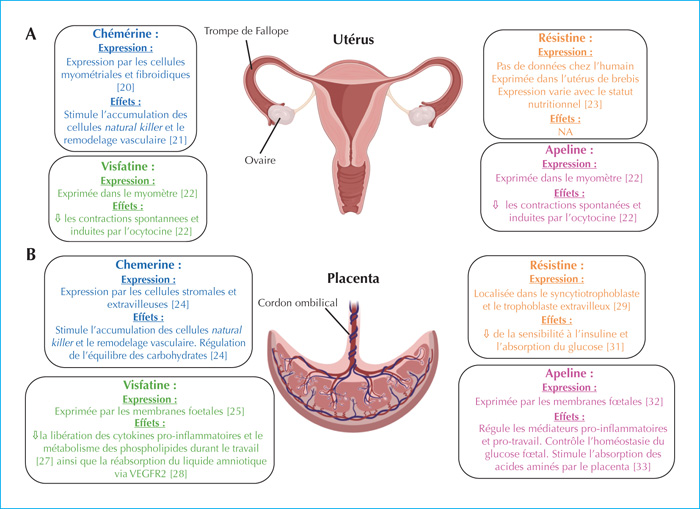Médecine de la Reproduction
MENUAre chemerin, visfatin, resistin and apelin involved in women fertility? Volume 22, issue 1, Janvier-Février-Mars 2020
- Key words: adipokines, chemerin, visfatin, resistin, apelin, uterus, placenta, polycystic ovary syndrome
- DOI : 10.1684/mte.2020.0784
- Page(s) : 66-77
- Published in: 2020
Adipokines are molecules expressed and secreted by white adipose tissue. They are known to regulate energy homeostasis and insulin sensitivity but also other physiological functions such as angiogenesis, immunity and reproduction. In addition to leptin and adiponectin, other adipokines such as chemerin, visfatin, resistin, and apelin are increasingly being studied in connection with fertility. Most of these hormones and their receptors are found in the reproductive tract in women. In ovarian cells, several in vitro studies show that they are able to regulate steroid secretions, proliferation and cell viability. These adipokines are also present in the uterus and placenta and could play a role in the exchanges between the fetus and the mother. The objectives of this review are to summarize data from the literature on the expression and the described effects of these adipokines in the ovary, the uterus and the placenta under normal and pathological conditions (polycystic ovary syndrome and some pathologies of pregnancy (gestational diabetes, preeclampsia and intra-uterine growth retardation).







